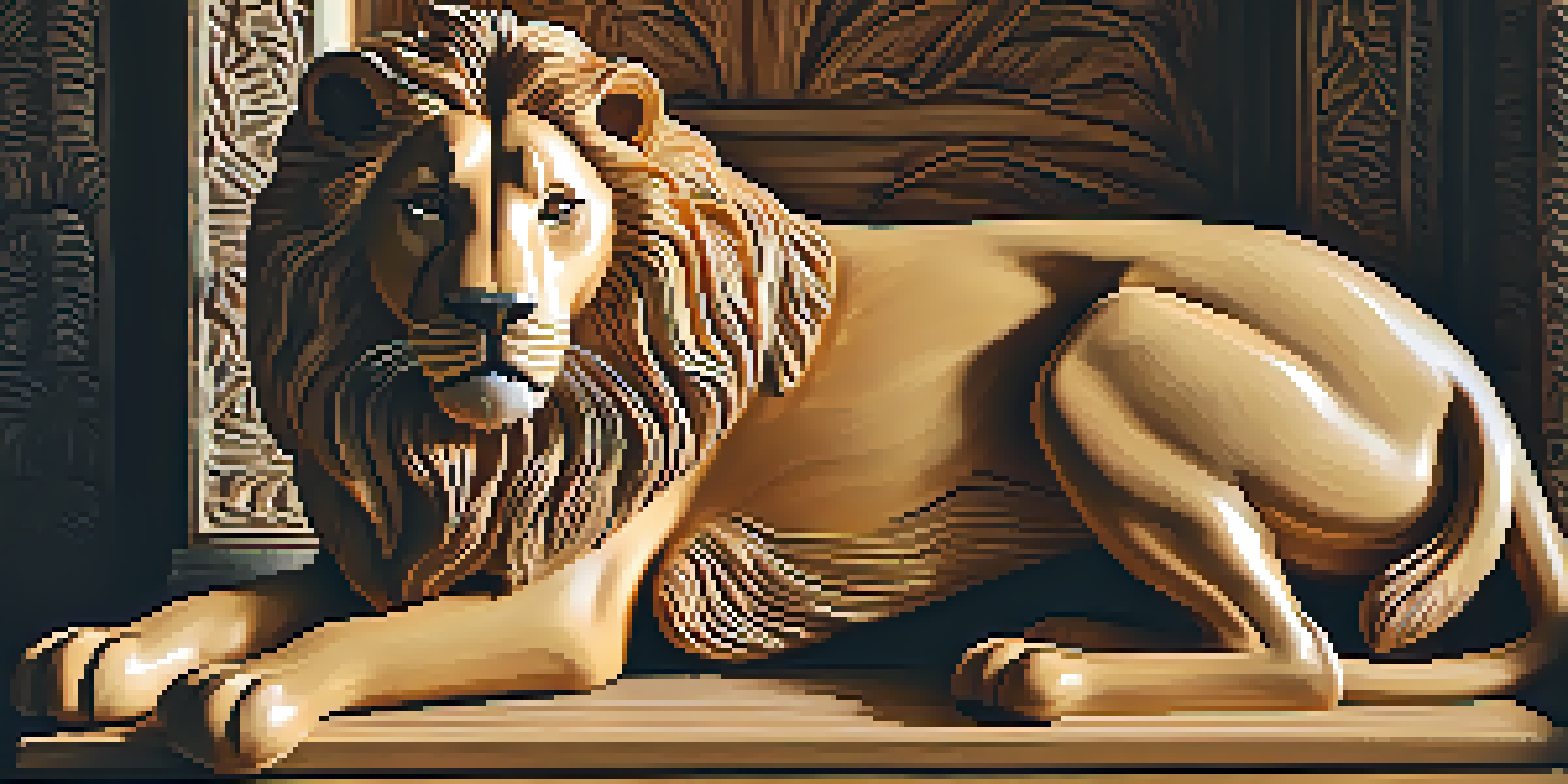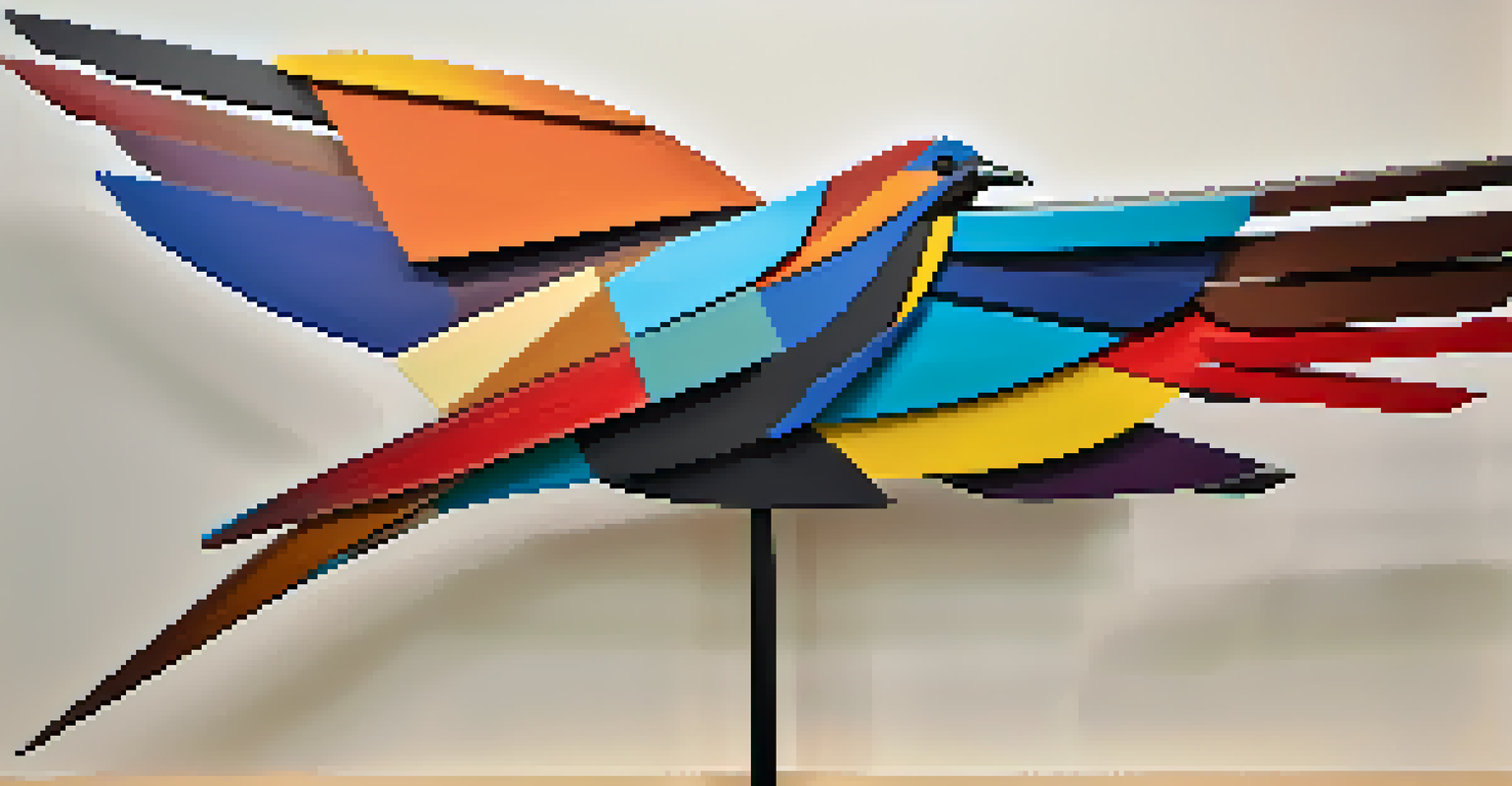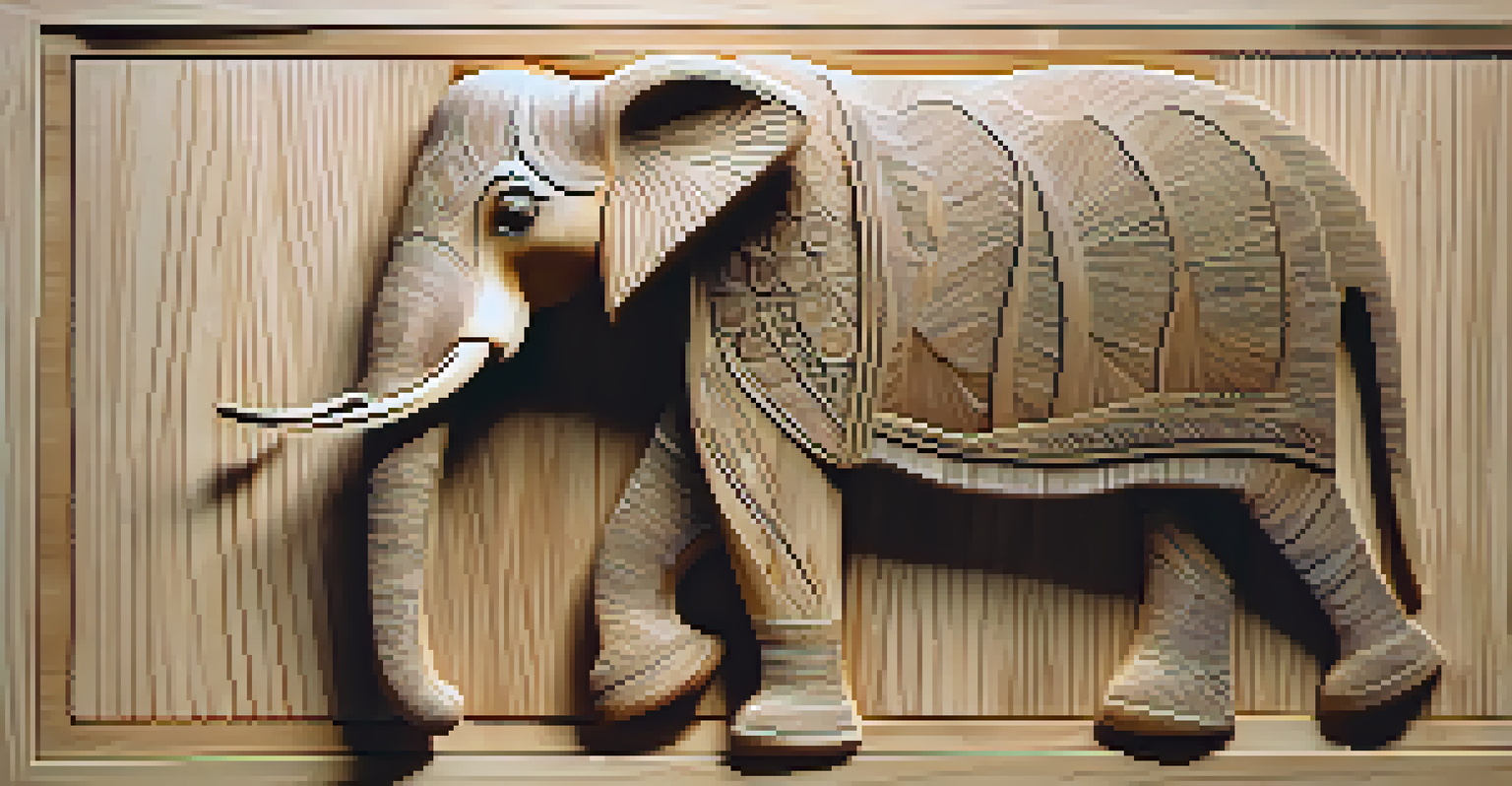Understanding Animal Carving Styles: From Realism to Abstraction

The Essence of Animal Carving: An Overview
Animal carving is an artistic expression that celebrates the beauty and complexity of wildlife. It encompasses various styles, each offering a unique perspective on the subject. From lifelike representations to abstract forms, these carvings allow artists to convey emotions, stories, and cultural significance.
Art is the most beautiful of all lies.
This art form has deep roots in many cultures, often reflecting spiritual beliefs or a connection to nature. Carvings can be found in materials ranging from wood to stone, each bringing its own texture and character. Understanding the different styles helps appreciate the creativity and skill involved in animal carving.
As we explore the spectrum from realism to abstraction, we’ll discover how each style communicates differently, engaging viewers in unique ways. Whether you’re an artist, collector, or simply an admirer, there’s much to learn about the nuances of animal carving.
Realism: Capturing Nature's Details
Realism in animal carving strives to depict subjects as they appear in nature, focusing on intricate details and lifelike features. Artists invest time in studying the anatomy, movement, and textures of animals, ensuring their work resonates with authenticity. This style often evokes a sense of admiration and respect for the creatures being portrayed.

For example, a realistic carving of a lion might showcase not only its physical attributes but also its majestic presence. The artist pays close attention to fur patterns, facial expressions, and even the play of light on the surface, creating a dynamic piece. Such carvings often serve as conversation starters, inviting viewers to appreciate the beauty of wildlife.
Diverse Styles in Animal Carving
Animal carving encompasses various styles, from realism to abstraction, each offering unique perspectives and emotional connections.
Moreover, realism can also serve educational purposes, helping viewers understand animal behavior and habitats. Through this style, artists can highlight conservation issues, making their work not only aesthetically pleasing but also impactful.
Stylization: Simplifying Reality
Stylization in animal carving takes a more interpretive approach, simplifying forms while retaining essential characteristics. This style allows artists to focus on specific traits or emotions, rather than strict realism. Think of it as capturing the spirit of an animal rather than a photographic representation.
Every artist dips his brush in his own soul, and paints his own nature into his pictures.
For instance, a stylized elephant might emphasize its trunk and tusks while downplaying other features, creating a more symbolic representation. This can evoke feelings of strength and wisdom, traits often associated with elephants. Stylization often resonates with viewers through its emotional impact rather than its precise accuracy.
This approach can also foster creativity, as artists experiment with shapes, colors, and patterns to express their vision. It opens up a world of possibilities, inviting interpretations that go beyond the surface, making stylized carvings both engaging and thought-provoking.
Abstract Carving: Breaking Boundaries
Abstract animal carving pushes the limits of traditional representation, offering a unique lens through which to view the subject. In this style, the focus is on form, color, and texture rather than lifelike accuracy. Artists may deconstruct an animal's features to create a piece that evokes emotion or thought without relying on realism.
For example, an abstract carving of a bird might feature exaggerated curves and vibrant colors, capturing the essence of flight and freedom. The viewer is invited to interpret the piece in their own way, making it a personal experience. Abstract art often challenges conventional perceptions, encouraging deeper engagement with the subject matter.
Cultural Influences Shape Art
Cultural backgrounds significantly influence animal carving styles, reflecting traditions, beliefs, and storytelling through artistic expression.
This style can also serve as a reflection of the artist’s inner world, allowing them to convey feelings or concepts that resonate with them. Abstract carvings remind us that art is not just about representation; it’s also about expression and connection.
Cultural Influences on Animal Carving Styles
Cultural backgrounds significantly shape the styles of animal carving, with traditions influencing how artists approach their subjects. Different cultures may emphasize certain animals as symbols of power, wisdom, or spirituality, impacting how they are represented in art. For instance, totem poles in Indigenous cultures often feature animals that hold specific meanings.
In contrast, Southeast Asian wood carvings may reflect intricate designs that tell stories of mythology and nature. Each region's materials, techniques, and beliefs contribute to a rich tapestry of styles, showcasing the diversity of animal carving worldwide. Understanding these cultural influences can deepen our appreciation of the artistry involved.
Moreover, contemporary artists often blend traditional influences with modern techniques, creating hybrid styles that reflect our global society. This fusion opens new avenues for expression, allowing artists to honor their heritage while innovating for the future.
Techniques and Tools Used in Carving
The tools and techniques used in animal carving play a crucial role in determining the final outcome of a piece. Traditional hand tools such as chisels and knives allow for precision and control, enabling artists to add intricate details. Power tools, on the other hand, can speed up the process and allow for more extensive projects, but they require a different skill set.
Each technique, whether it involves whittling, sanding, or polishing, contributes to the texture and finish of the carving. For instance, a polished surface can create a stunning contrast against rougher areas, highlighting specific features. Experimentation with different tools often leads to unique styles and personal flair.
Future Trends in Animal Carving
The future of animal carving is marked by innovations in technology and a shift towards sustainability, leading to exciting new artistic possibilities.
Regardless of the tools used, the artist’s vision remains paramount. Mastering technique is essential, but creativity and passion breathe life into each carving, transforming raw materials into captivating works of art.
The Emotional Impact of Animal Carving
Animal carvings often evoke strong emotional responses, connecting viewers with nature and the animal kingdom. The ability to capture the essence of an animal can inspire feelings of awe, joy, or even nostalgia. This emotional resonance is what makes these pieces not just decorative items but meaningful expressions of art.
For many collectors and enthusiasts, owning a carving can create a sense of connection to the wildlife it represents. A beautifully crafted owl, for example, may remind someone of peaceful nights spent in nature, fostering a personal bond with the piece. The stories and memories associated with a carving can enhance its value far beyond the material.

Additionally, animal carvings can serve as powerful reminders of conservation efforts and the importance of protecting our natural world. Through their art, creators often spark conversations about wildlife preservation, encouraging viewers to reflect on their relationship with nature.
The Future of Animal Carving: Trends and Innovations
As we look to the future, animal carving continues to evolve, incorporating new techniques and materials. Innovations in technology, such as 3D printing and digital design, are opening up exciting possibilities for artists. These advancements allow for intricate designs that may have been challenging to achieve with traditional methods.
Moreover, there's a growing trend toward sustainability in art, prompting artists to use reclaimed or eco-friendly materials. This not only reduces environmental impact but also adds an interesting narrative to each piece. The focus on sustainable practices aligns with a broader cultural shift towards environmental consciousness.
Ultimately, the future of animal carving promises to be dynamic and diverse, embracing both tradition and innovation. As artists continue to explore new ideas and techniques, we can expect to see a vibrant spectrum of styles that reflect our changing world.